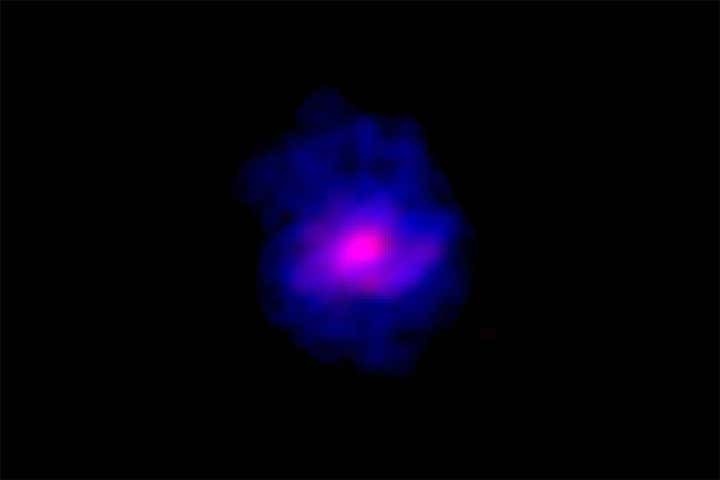12.02.2021

A picture of the galaxy called ALESS 073.1, just 1.2 billion years after the big bang
Cardiff University
Astronomers have spotted a galaxy they know to be young but which has features typically seen only in older galaxies. This finding is challenging our current understanding of how quickly galaxies form.
Galaxies are thought to start off as quite chaotic structures, with clouds of cold gas, stars and dust travelling through space. They grow by colliding and merging with smaller galaxies and can form a disc-like structure with a central cluster of stars known as a bulge.
This can take up to a few billion years to complete. Unless it is the galaxy known as ALESS 073.1.
Using the Atacama Large Millimeter/submillimeter Array (ALMA), Federico Lelli at Arcetri Astrophysical Observatory in Italy and his colleagues took a high-resolution image of this galaxy, which is nearly 12.5 billion light years away. This gave them a picture of the universe from about 1.2 billion years after the big bang.
The team mapped the modelled the distribution and movement of cold gases in the galaxy and found that it formed a disc that was rotating in a regular way. There were also hints of spiral arms – like those of the Milky Way – another feature of mature galaxies.
“We expected galaxies to be messy at the early universe,” says Lelli. “But we were stunned to see this gas rotating in a similar way to more mature galaxies.”
Lelli says that this disc rotation implies the presence of a central bulge that couldn’t be seen in the images, suggesting that bulges may form over less time than previously thought. He says that one possibility is that bulges could form before the presence of the discs, which goes against previous cosmological theories.
“The main message is that galaxies can form extremely fast,” says Lelli. He says they may go through an early stage of rapid growth, then mature more slowly. But he says it is hard to make generalisations about this based on a single image, so more are needed to see if this is common for other galaxies.
Quelle: NewScientist
